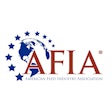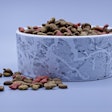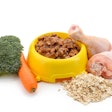
Pet food regulations can be difficult to interpret, so it is often wise to seek further understanding of how an agency such as the U.S. Food and Drug Administration (FDA) views a particular matter to help ensure compliance with the rules. In that vein, the Guidance For Industry (GFI) documents found on the FDA website provides valuable insight to pet food manufacturers and distributors (see web box for link).
They are not legally binding in the same manner as are the regulations, but they do reflect the FDA's "thinking" on a particular matter. Unlike the Compliance Policy Guides (CPG), which are directed more towards FDA field personnel (see Petfood Industry magazine’s December 2018 column), the GFI are written for the specific intended benefit of manufacturers and others in the industry.
About the GFI
The GFI list is not the easiest to navigate, though, in that the documents are not arranged in an intuitively usable fashion (e.g., by subject matter). Rather, the Center for Veterinary Medicine (CVM) within the FDA arranges its guidance regarding animal products by number, ranging from lowest to highest in roughly chronological order.
However, because many GFI are subsequently removed or replaced by new or updated guidance, there are some significant gaps in numbering, and the dating is not always in corresponding order with the numbers. The website allows for the ability to browse by topic or search under specific parameters, but unless you know exactly what you are looking for, finding the correct information may be hit or miss.
As with the CPG, most of the GFI pertain to animal drug issues. There are also quite a few that relate to matters such as medicated feeds and control of bovine spongiform encephalopathy, which generally are more applicable to livestock feeds than pet foods. However, the GFI relating to good manufacturing practices, hazard analysis and risk-based preventive controls (e.g., GFI #235, 241, 245 and 246) as implemented under the Food Safety Modernization Act (FSMA) may pertain to pet foods equally to other animal feeds.
GFI and the pet food industry
Perhaps the two GFI most pertinent to the pet food industry include CVM GFI #55 (Supportive Data for Cat Food Labels Bearing "Reduces Urinary pH" Claims: Guideline in Protocol Development) and #122 (Manufacture and Labeling of Raw Meat Foods for Companion and Captive Noncompanion Carnivores and Omnivores). The former was issued in the mid-1990s and paved the way for several cat foods to come to market bearing the claim. The latter came out in 2004 and lays the groundwork for how the agency views these types of products to this day.
Other CVM GFI relating to ingredients and/or contaminants in animal feed (including pet foods) include:
-
#80 Anti-Salmonella agents
-
#98 Dioxin in anti-caking agents
-
#112 Fumonisin in animal feed
-
#158 Use of deer and elk materials in feed
-
#221 Food Additive Petitions
-
#223 Color additives
-
#239 Human food byproducts in feed
Guidance documents from CFSAN
In addition to CVM's GFI, there are also a number of guidance documents put out by the Center for Food Safety and Applied Nutrition (CFSAN), a sister agency of CVM that oversees the regulation of food for human consumption. Again, much of the guidance does not apply to pet foods, but there are a number that have definite implications. Unfortunately, navigating CFSAN's list is even more tedious than CVM's, in that it does not number its guidance documents, rather it only lists them by year of issuance (in reverse order).
Perhaps the one "cross cutting" GFI with of most impact on pet foods is "Guidance for Industry: Testing for Salmonella Species in Human Foods and Direct-Human-Contact Animal Foods." Because of the likelihood of people in the general population to have contact with pet foods, it affects how pet foods are tested for this potentially pathogenic microorganism and its implications for public health. Other guidance documents issued by CFSAN that may have repercussions for the pet food industry include:
-
Mandatory food recalls (2018)
-
Food facility registration (2018, 2016, 2012, 2010)
-
Low-acid canned foods (2017)
-
GRAS determinations (2017, 2016)
-
Evaporated cane juice (2016)
-
GMO labeling (2015)
-
"Gluten-free" claims (2014)
-
FDA seafood List (2012)
-
"Whole grain" claims (2006)
The CVM website also provides a list of new GFI that are under development. Except for the mention of several documents relating to preventive controls which have already been issued in draft form in 2018, none of those listed directly pertain to pet foods. However, the webpage also makes mention of impending revision to a CPG (Sec. 665.100 – Animal Food Ingredients). Apparently, CVM intends to clarify the role of AAFCO (the Association of American Feed Control Officials) Official Feed Ingredient Definitions in establishment of the "common or usual: names" of feed ingredients.
For more information
CVM Guidance For Industry: https://bit.ly/2Qf8VRg
CFSAN Food Guidance: https://bit.ly/2KWRSgE


















